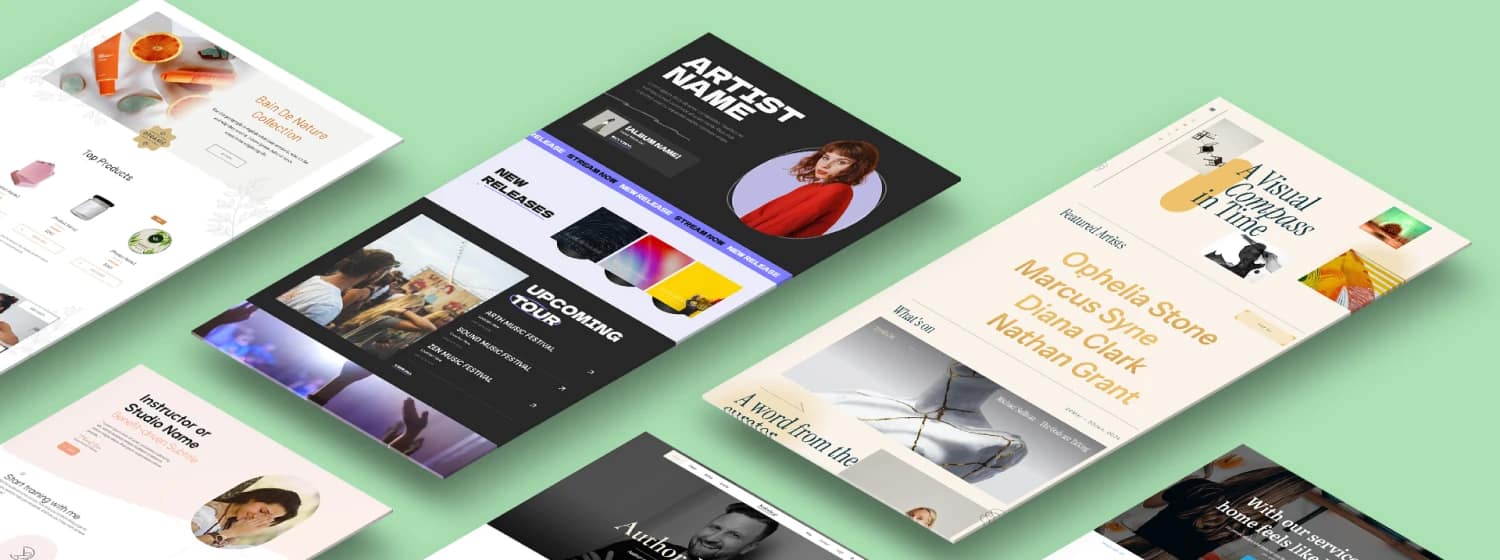TL;DR: My Proven Landing Page Guide for Higher Conversions
A high-converting landing page isn’t built by chance — it’s built with purpose.
In this landing page guide, I share my 3P Conversion Framework™ — the exact system I use to turn visitors into leads and customers.
Purpose: Every great landing page starts with clarity. One page, one job. Every section should move the visitor toward a single goal — whether that’s collecting leads, selling a product, or driving sign-ups.
Psychology: The secret behind what makes a good landing page isn’t design alone — it’s how you use emotion, trust, and relevance to guide action. From the headline to the CTA, every word and visual should make the next step feel effortless.
Performance: A landing page is never done. I test, track, and refine every element to keep improving. Smart A/B testing, clear metrics, and tools like Thrive Architect and Thrive Optimize help me do it faster.
If you want to learn how to build a great landing page that connects, convinces, and converts — this guide walks you through every step.
There are over 28 million online businesses competing for attention and that number grows every day.
So when someone clicks your ad, your email link, or your social post — your landing page has one job: convert.
If it doesn’t connect, convince, and guide them to act, you’ve just lost the click, the lead, and possibly the sale.
That’s why I created this landing page guide — to help you build a focused, persuasive page that doesn’t just look good but performs.
Over the years, I’ve tested countless layouts, offers, and calls to action. I’ve seen what makes a good landing page and what kills conversions instantly. Through that process, I developed a simple, repeatable system that works for any business, any offer, and any niche — the 3P Conversion Framework™.
It’s the backbone of my entire landing page strategy.
- Purpose: Define one clear outcome — every page needs a single, measurable goal.
- Psychology: Understand how people make decisions and use that insight to guide them toward action.
- Performance: Measure, test, and refine continuously until every element earns its place.
Whether you’re learning how to build a great landing page for the first time or refining one that already works, this guide will help you think strategically, design intentionally, and convert confidently.
Top Questions About Landing Pages (That This Guide Answers)
A high-converting landing page is built for one purpose: to turn visitors into leads or customers. It uses conversion-focused copy, a single clear call to action, and removes all distractions like menus or conflicting goals.
Start with a strong value proposition, a fast-loading mobile-optimized layout, and a headline that speaks directly to your audience’s pain points. Add trust elements (testimonials, reviews) and test your opt-in form placement and design.
Avoid navigation menus, long walls of text, multiple CTAs, and ignoring mobile responsiveness. These mistakes ruin user experience and kill momentum — especially for traffic coming from paid ads or social.
Depending on your offer, 10–20% is solid. But don’t stop there — track scroll depth, bounce rate, and where users drop off in your landing page funnel to uncover real opportunities.
Yes — even small tweaks can unlock major gains. Start by testing your headline, CTA button, form layout, or hero image. Use landing page testing tools like Thrive Optimize to keep it simple and fast.
Thrive Architect gives you full control over layout, design, and structure. Pair it with Thrive Suite and Thrive Optimize for full lead generation, A/B testing, and conversion tracking — all in one place.
The 3P Conversion Framework™: My Landing Page Strategy for Predictable Results
When I started experimenting with landing pages, I used to treat them like mini websites — packed with information, navigation menus, and multiple calls to action. The result? Confused visitors and weak conversions.
It wasn’t until I stripped everything back and focused on what actually drives action that I developed the 3P Conversion Framework™ — the foundation of this entire landing page guide. It’s my go-to system for building landing pages that convert with consistency.
Here’s how it works:
1. Purpose — Define One Clear Goal
Every high-performing landing page starts with purpose. Before I write a single line of copy or design a single section, I define exactly what I want the visitor to do.
Do I want them to download a free guide? Book a call? Buy a product?
Once I decide that, everything on the page exists to support that one goal.
That’s what makes a good landing page — it eliminates distractions and creates clarity.
I call it the “One Page, One Job” rule. When your message and design revolve around a single purpose, every click becomes intentional. (Learn More)
2. Psychology — Design for How People Think
A successful landing page strategy isn’t about clever design tricks; it’s about understanding human behavior.
Every section of the page — from the headline to the CTA — should feel like a conversation that builds trust and momentum.
That’s why I write headlines that promise value fast, use visuals that show outcomes, and include testimonials that tell transformation stories instead of vague praise.
When I create a landing page, I always ask: Does this make the next step feel effortless?
If not, I adjust until it does. That’s the difference between a page that gets visitors and a page that gets results. (Learn More)
3. Performance — Test, Track, and Improve
Even the best pages aren’t “done.”
Every high-converting landing page is a living experiment — one I monitor, test, and refine until I’m confident it’s performing at its best.
I use tools like Thrive Architect to build and update fast, and Thrive Optimize to A/B test variations directly on the page. Each test reveals what really moves the needle — sometimes it’s a headline tweak, sometimes it’s a form change, sometimes it’s removing clutter.
If you want to know how to create a landing page that keeps improving over time, this is it: measure everything, keep what works, and never stop optimizing. (Learn More)
That’s the power of the 3Ps — Purpose, Psychology, and Performance.
They’re not just steps in a process; they’re the mindset behind every page I build. And in the next section of this landing page guide, I’ll show you how to apply them one by one — starting with Purpose.
Part 1: Purpose — The Foundation of Every Great Landing Page
When people ask me what makes a good landing page, my answer is always the same: clarity of purpose.
Before I start designing, writing, or testing, I decide exactly what I want this page to accomplish. That single decision shapes everything else — layout, copy, visuals, and calls to action.
I call it the Golden Rule of Landing Pages: One Page, One Job.
Every high-converting page I’ve built started by defining one clear outcome. It could be collecting leads for a free guide, getting people to book a discovery call, or encouraging an immediate purchase. But there’s always one goal — never two, never five.
When I ignore that rule, the page instantly loses power. Multiple CTAs, extra navigation links, or “learn more” buttons dilute the message and confuse visitors. Clarity disappears, and so does conversion.
That’s why my landing page strategy always begins with purpose. I ask myself three questions before writing a single word:
What is the exact action I want visitors to take?
What problem does this page help them solve?
How can I make that outcome feel effortless?
Once I can answer those clearly, the entire page falls into place.
If you’re learning how to build a great landing page, this is where to start. Forget colors, fonts, and templates for now — focus on the job your page needs to do. Everything else is secondary.
When you start with purpose, you create direction. And when every element supports that direction, you create momentum — the kind that leads straight to conversion.
Part 2: Psychology — The Core of Conversion
Here’s the truth most people miss: design alone doesn’t sell — psychology does.
If Purpose is the foundation of this landing page guide, Psychology is what makes it come alive.
When I sit down to create a landing page, I think about how my visitor feels in each moment — what they want, what they fear, what makes them hesitate. A good landing page strategy anticipates those emotions and answers them before they ever become objections.
That’s what makes a good landing page: it feels natural, trustworthy, and effortless to act on.
The Mindset Behind Every Click
Every word, visual, and layout choice affects how someone processes what they see.
Here’s how I apply psychology to build trust and guide action:
- Headlines that reduce mental load – The brain loves clarity. I write headlines that promise value in three seconds or less. If they can’t grasp the benefit instantly, they’ll scroll away.
- Proof that eases uncertainty – I use testimonials, recognizable logos, and specific results to show that the offer works. Confidence replaces doubt.
- Design that flows naturally – Whitespace, logical reading patterns, and consistent color cues make it easy to focus on what matters — the CTA.
- Emotion that creates momentum – Curiosity, relief, excitement, or safety — I pick one dominant emotion and let it guide the tone of the entire page.
If I want visitors to say yes, I remove every reason they might say maybe later.
Clarity Converts — Confusion Kills
When I teach people how to build a great landing page, I always emphasize cognitive ease — the idea that the easier something is to understand, the more people trust it.
That’s why I keep navigation off my landing pages, write in short sections, and use scannable headlines. The easier the journey, the higher the conversion.
Every visual cue, every word of copy, every testimonial has one job: to make the next step feel like the obvious one.
In short:
Psychology is the invisible structure behind every great landing page strategy.
It’s how I turn attention into trust, and trust into clicks.
Next, I’ll move into Performance — the part where the real optimization begins, and where this landing page guide shifts from theory into action.
Part 3: Performance — Test, Track, and Improve
Here’s the part most people skip — but it’s also where good landing pages become great ones.
Even after I hit publish, I never assume my page is “done.”
Performance is where this entire landing page strategy comes together. It’s how I find out what’s working, what’s not, and what to do next.
Because no matter how polished a page looks, if it isn’t converting, it’s just decoration.
A/B Testing the Smart Way
When I first learned how to build a great landing page, I used to change too many things at once — headline, colors, button text, layout. The results were unpredictable, and I couldn’t tell which change made the difference.
Now I test with precision. One variable at a time.
Start with the headline. It’s the first thing visitors see — and one of the biggest levers for conversion.
Then test your CTA. Small shifts in phrasing (“Get My Free Guide” vs. “Show Me How”) can completely change performance.
Finally, test form length and placement. Short forms reduce friction, while multi-step ones can increase commitment.
I use Thrive Architect to design quickly and Thrive Optimize to A/B test directly inside the same builder. No third-party tools, no messy code — just focused iteration.
That’s the difference between guessing and improving.
Track What Actually Matters
A great landing page guide shouldn’t stop at best practices — it should help you think like a data-driven creator.
So when I track results, I don’t obsess over vanity metrics like total visitors. I
I look at indicators that tell me if the page is truly doing its job:
- Conversion rate: Are people taking the main action?
- Form drop-offs: Where are they hesitating or abandoning?
- Scroll depth: Are visitors seeing key proof and CTA sections?
- Traffic source quality: Do some channels convert better than others?
Each insight shapes my next move. I don’t just want to know what happened — I want to know why.
Heatmaps and Behavior Insights
Numbers tell one story. Behavior tells the rest.
When I review heatmaps, click maps, or session recordings, I can literally see how people interact with the page.
I’ve spotted CTAs that were ignored because they blended into the design, testimonials buried too far down, or forms that looked intimidating on mobile.
Once I make those fixes, conversions jump — not because I changed everything, but because I changed the right thing.
That’s the part most guides skip, but it’s where what makes a good landing page becomes clear: you don’t guess what your audience needs — you observe, adapt, and deliver.
Iterate, Don’t Redesign
You don’t need to rebuild from scratch every time.
In my experience, small, strategic tweaks over time outperform full redesigns.
Change one thing, measure the impact, repeat.
That’s how a good page becomes your preferred landing page — one that consistently delivers results without endless overhaul.
Performance isn’t just the third “P” in this landing page guide — it’s the difference between a static website and a living conversion system.
I don’t just build pages that look good.
I build pages that evolve, improve, and sell — again and again.
What Are The Core Elements of a High-Converting Landing Page?
You don’t need a complicated design. You need the right elements — in the right order — working together to remove friction and drive action.
Every high-converting landing page shares the same foundation: a headline that hooks, an offer that matters, a CTA that’s impossible to miss, and just enough proof to build trust. Add smooth layout, mobile responsiveness, and strong copy — and suddenly, every scroll feels intentional.
This section breaks down each part of your landing page — and shows you how to make it do what it’s supposed to do: convert.
👉 Want to skip ahead and see how it all fits together on the page? Check out our Optimal Landing Page Structure Guide — it maps out the exact flow of a high-converting landing page, from headline to form. You’ll learn where each element goes, why it matters, and how to guide your visitor’s eye (and click) all the way to conversion.
Headline
Your headline is the first – and sometimes only – thing your visitor will read. You have about 3 seconds to earn their attention and signal they’re in the right place.
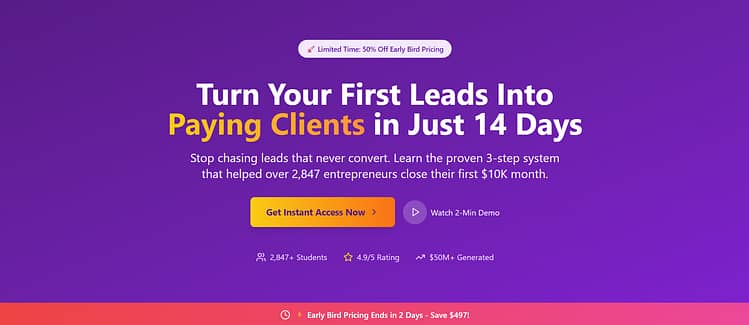
But here’s the key: don’t lead with your product. Lead with the benefit.
Visitors don’t care that you’ve built a course, designed an app, or created a new coaching program. They care about what it will do for them. Will it save them time? Help them earn more? Solve a nagging problem? That’s what your headline should say.
Compare:
- ❌ “Introducing Our New Marketing Bootcamp”
- ✅ “Turn Your First Leads Into Paying Clients in Just 14 Days”
Great headlines are clear, benefit-driven, emotionally resonant, and aligned with your visitor’s goal — not yours. This single line sets the tone for your entire page.
If it doesn’t connect, nothing else will matter.
Want to learn more about creating headlines that instantly grab attention and lead to more scrolling? Check out our detailed guide on how to make your landing page headlines stand out.
Offer
Once you’ve hooked them with your headline, your next job is to make the offer feel irresistible.
This doesn’t just mean describing your product or service. It means answering two core questions in your visitor’s mind:
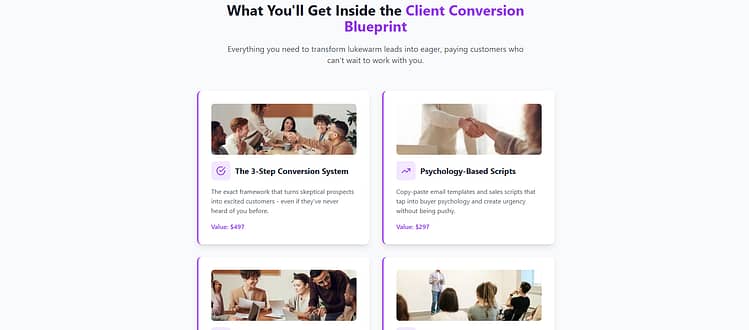
A strong offer clearly lays out the value exchange — whether it’s a free guide, a discounted program, or an exclusive bonus. It shows what’s included, why it matters, and what kind of transformation they can expect.
But urgency and relevance are what turn interest into action. Add a time limit, a fast-action bonus, or a reason to act today. And most importantly, tie the offer back to the problem your audience is trying to solve.
Examples of strong offer framing:
- “Enroll today and get 3 bonus coaching calls — only for the first 25 sign-ups.”
- “Download the free checklist that helped over 10,000 creators double their opt-in rates.”
Your offer doesn’t have to be complex. It just has to be clear, desirable, and aligned with your landing page goal.
Call to Action (CTA)
This is where the conversion happens (or doesn’t).
Your CTA is more than just a button. It’s the moment of decision. It needs to be immediate, clear, and confidently placed.
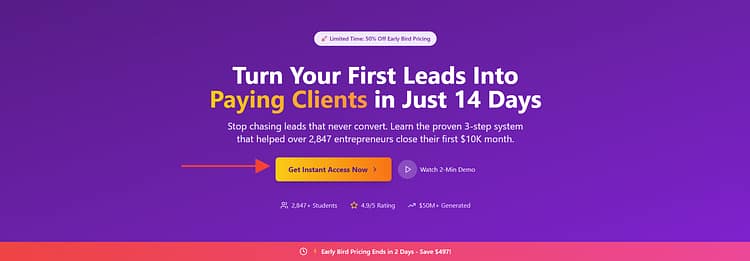
At minimum:
- It should appear above the fold
- It should stand out visually (button color, size, spacing)
- It should use action-driven copy that reflects the offer
Avoid generic labels like “Submit” or “Click Here.” Instead, speak to the outcome or benefit of clicking:
You’ll often want to repeat the CTA further down the page — especially for long-form landing pages. But each instance should reinforce, not interrupt, the flow of the page.

And don’t forget: your CTA only works if everything before it builds toward it. If your headline, offer, and copy haven’t done their job, no CTA in the world will convert.
Want to sharpen your CTA strategy even further?
Whether you’re just getting started or fine-tuning your landing pages, these resources will help you turn passive buttons into active conversion points: 🎯 How to Create the Right Type of CTA in WordPress
Learn how to create intentional CTAs that grab attention at the right time and drive the click.
🚀 CTA Hacks to Boost Clicks and Conversions
Explore subtle design, copy, and placement tweaks that increase engagement without overwhelming your visitor. Great for A/B testing and continuous improvement.
If your offer is time-sensitive or bonus-driven, this tool helps you implement authentic urgency — from fixed countdowns to evergreen scarcity — without sacrificing trust.
Proof
Even if your copy is strong and your offer sounds great, most visitors won’t act until they see one thing: proof that it actually works.
That’s where social proof, credibility indicators, and trust elements come in. They help remove doubt and build confidence by showing that real people — ideally people like your visitor — have already taken the leap and seen results.
Strong proof can include:
- Testimonials (especially ones that highlight a transformation or benefit)
- Star ratings and reviews
- Client logos or media features
- Case studies or data points (e.g., “Used by 12,000+ freelancers”)
The key is specificity. A vague “Great service!” doesn’t do much. But a quote like “I doubled my client leads within two weeks of using this funnel template” moves the needle.
Real faces, real names, and real outcomes build trust. Stock photos and generic praise don’t.
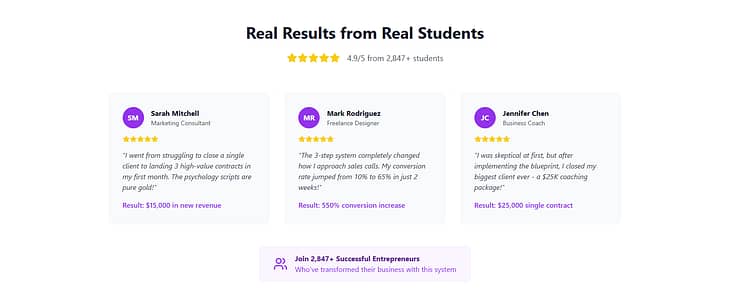
Use Thrive Ovation to easily collect and showcase testimonials that look clean and feel real — no messy plugins or clunky layouts needed.
Your CTA builds momentum. Proof gives people permission to click it.
Visuals
Good visuals don’t just make your landing page “look nice” — they guide attention, create emotional resonance, and reinforce the message behind your offer.
Whether it’s images, mockups, or video, your visuals should do one thing: show the outcome, not just the product.

Use authentic photos, real faces, and on-brand visuals that reflect your offer’s value.
If you’re using video, keep it short, emotionally focused, and tightly scripted. Don’t aim to inform — aim to persuade.
Pro Tip: Add your CTA near or over visuals – it draws more clicks than placing them separately.
The best landing pages use visuals as part of the conversion path — not just decoration. Every image should pull the visitor forward.
Copy
Your landing page copy isn’t just there to explain — it’s there to sell.
That doesn’t mean it has to be long. It means every line needs to move the reader closer to action. Whether you’re writing a headline, a subheading, or a product description, your copy should be:
Think of your landing page as a conversation. You're not delivering a lecture — you're answering the visitor’s unspoken questions in real time:
- “Is this for me?”
- “Can I trust it?”
- “Will it actually work?”
- “What happens if I say yes?”
Use formatting to help skimmers stay engaged:
🔑 Key principle: Write like you’re solving their problem — not pitching your product.
You don’t need to be clever. You need to be clear, confident, and conversion-minded.
Forms
Your form is where the action happens — it’s the final gateway between interest and conversion. But too many landing pages lose people here by asking for too much, looking intimidating, or feeling disconnected from the rest of the experience.
Here’s how to make your form convert:
✅ Ask for the least amount of information possible
The more fields you add, the more friction you create. If you only need an email, don’t ask for their full name, phone number, and life story.
✅ Make it feel natural
Your form should flow directly from your offer and copy. If the page promises a quick win, the form should feel just as fast and simple.
✅ Use smart form design
- Single-column layouts convert better
- Inline error handling prevents drop-offs
- Progressive disclosure (multi-step forms) can boost completion rates for longer signups
✅ Reinforce value and trust near the form
A quick benefit reminder or testimonial next to the form can reduce hesitation. So can small cues like a privacy statement or “No spam. Ever.”
Pro Tip: Use Thrive Architect to build smooth, integrated forms that match your layout and funnel — no external tool juggling required.
The form isn’t the finish line. It’s part of the journey. Treat it like a natural next step, not a legal document — and more people will complete it.
What Are The Different Types of Landing Pages?
Not all landing pages are built for the same mission.
Some are designed to capture leads, others to pre-sell an offer, and some to close the sale right on the spot. That’s why high-converting landing pages aren’t one-size-fits-all — the structure you choose should align with the action you want the visitor to take and where they are in your funnel.
Understanding these differences helps you choose the right page type, layout, and content for maximum conversion.
Let’s break down the main landing page types and when to use each.
Skip to a landing page type:
Lead Generation Page | Click-Through Page | Long-form Sales Page
SEO Landing Page | PPC Landing Page | Thank You Page
Lead Generation Page
These are built to collect contact details — most often an email address — in exchange for something of value. Think free guides, checklists, templates, webinars, or access to a mini-course.
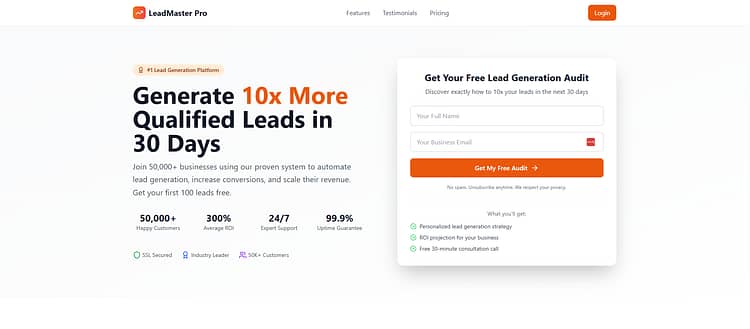
The goal is a value-first exchange:
👉 “You give me your email, I’ll give you something useful.”
To convert well, lead gen pages should have:
Ideal for: Top-of-funnel lead capture, tripwire funnels, or email list building.
👉 Want to build your own lead magnet funnel? Follow this step-by-step tutorial on creating an eBook landing page — complete with design tips, copy examples, and templates you can customize.
Click-Through Page
These are pre-sell pages — meant to warm up visitors before sending them to a checkout or pricing page. They’re especially useful for offers that need a bit of context or setup before asking for payment.
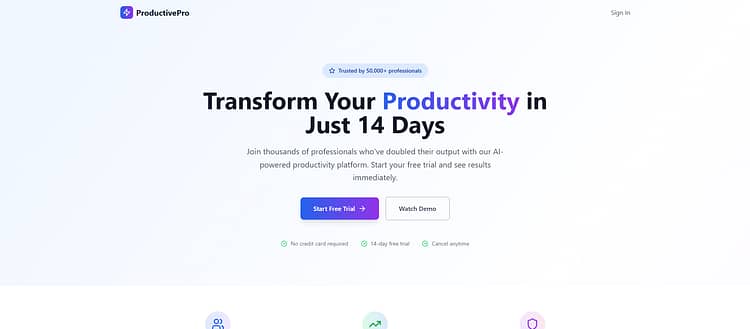
Click-through pages often include:
Ideal for: Software trials, membership offers, or products with pricing tiers.
👉 Selling physical products? See how eCommerce landing pages use pre-sale storytelling and visuals to drive more checkouts.
Long-Form Sales Page
When you need to build trust, explain your offer, overcome objections, and walk someone from cold to sold — a long-form sales page is your best asset.
These pages follow a structured narrative:
The copy is long, but the design should be scannable and strategic. Use sticky CTAs, sections with distinct goals, and mobile-optimized formatting.
Ideal for: High-ticket products, online courses, coaching programs, or complex offers that require explanation.
👉 Need a niche example? Learn how to tailor your copy and layout with our Life Coach Landing Page Guide.
SEO Landing Page
These are designed to rank on Google and bring in organic traffic over time. They're often evergreen and content-rich, with relevant keywords woven into the page.
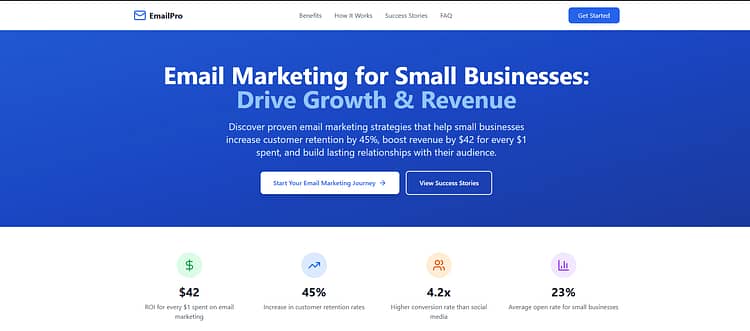
Key features:
Ideal for: Ongoing lead generation, content upgrades, or ranking for product-related search terms.
👉 Building authority? See how book landing pages use content-rich SEO structures to drive long-term discovery and sales.
Campaign Landing Page
The opposite of SEO pages — these are designed for immediate action via ads, launches, or time-sensitive campaigns. Every part of the page is geared toward fast conversions.
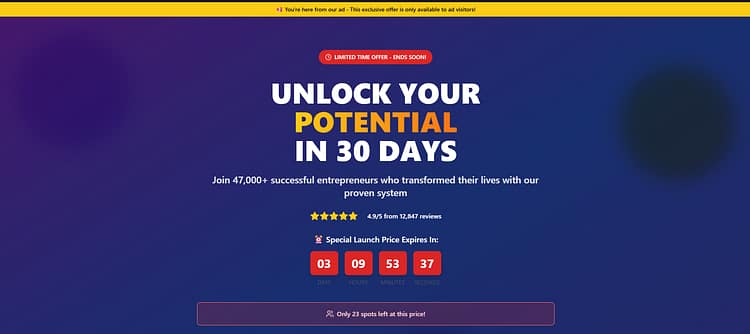
They’re often short, sharp, and CTA-heavy.
Key elements:
Ideal for: Product launches, holiday promos, or limited-time discounts.
👉 Planning a seasonal push? Our Black Friday landing page tips show you how to create urgency and boost ROI fast.
Thank You / Confirmation Page *(Bonus)*
Often overlooked, but this is still a landing page — one that confirms the action and continues the journey. Use it to build momentum.
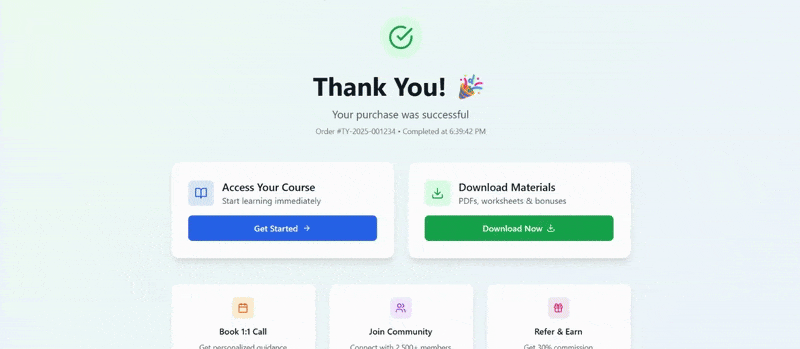
It should:
Ideal for: Increasing funnel depth, upsells, or driving referrals post-conversion.
👉 Bonus tip: Pair your thank you page with a low-friction offer. These affiliate landing page strategies can help you monetize post-conversion traffic without hurting trust.
Other Use Cases Worth Exploring
- 🔍 Running Google Ads? Learn how to design a PPC landing page that aligns with ad intent and maximizes your ROI.
- 🪩 Launching a one-off promo or event? See how splash page examples create impact in just a few scrolls.
✅ Want to turn a simple confirmation into a strategic conversion moment?
👉 Read our Thank You Page Optimization Guide to learn how to reinforce trust, guide next steps, and keep your funnel momentum going.
And if you’re ready to boost your revenue *after* the opt-in or purchase?
👉 Explore our Cross-Sell and Upsell Strategy Guide for practical, low-friction ways to increase customer value without needing more traffic.
Best Practices and Common Mistakes to Watch Out For
Even the most beautiful landing pages can miss the mark — and it usually comes down to skipping the basics or repeating common missteps.
Before you hit publish, make sure you’re building for *conversion*, not just aesthetics. That means eliminating friction, clarifying your message, and making every scroll intentional.
Here are five in-depth guides to help you sharpen your approach and sidestep costly errors:
- Landing Page Checklist
Your go-to guide for building pages that convert — from headlines to forms and everything in between. - 11 Common Landing Page Mistakes
Menus, mixed CTAs, confusing copy — this article breaks down the most frequent (and costly) conversion killers. - Mobile Landing Page Best Practices
More than half your traffic is mobile. Here’s how to optimize your layout, tap targets, and load time for small screens. - Landing Page Hacks That Actually Work
Quick wins and smart tweaks that boost your conversion rate — without needing a full redesign. - How to Build Dynamic, Personalized Landing Pages
Generic messaging leaves money on the table. Learn how to tailor your content to each visitor and increase relevance on every visit.
Conclusion: One Page Can Change Everything
A high-converting landing page isn’t just a pretty container for your offer — it’s your digital salesperson, working 24/7 to turn traffic into action.
When it’s built with purpose, it doesn’t just “look nice.”
It guides decisions, builds trust, and drives results — without distractions, confusion, or wasted opportunities.
Whether you’re:
- Capturing leads for a freebie
- Selling a course or service
- Testing a new idea
- Or validating a product before launch
…a conversion-focused landing page is how you do it right from the start.
🟢 Ready to build yours?
Start with Thrive Architect — the best drag-and-drop builder for landing pages that actually convert.
Or unlock the full toolkit with Thrive Suite for A/B testing, testimonials, scarcity timers, and more.

